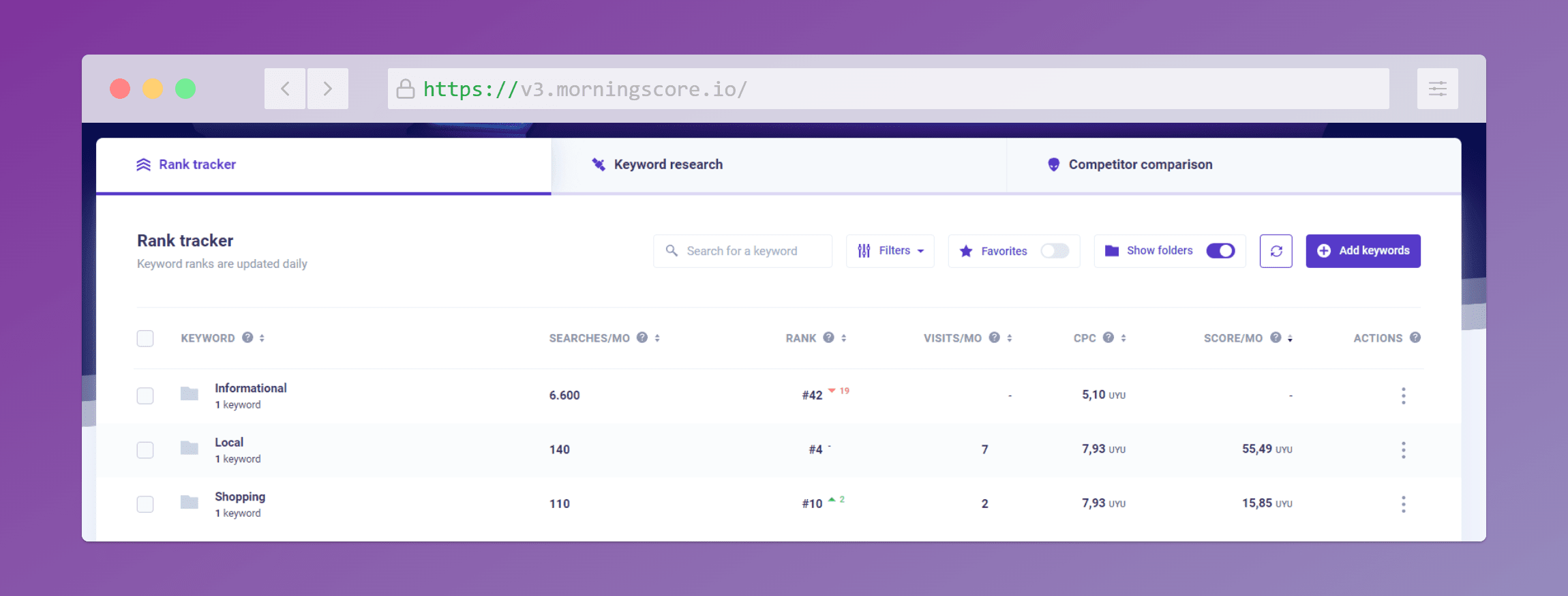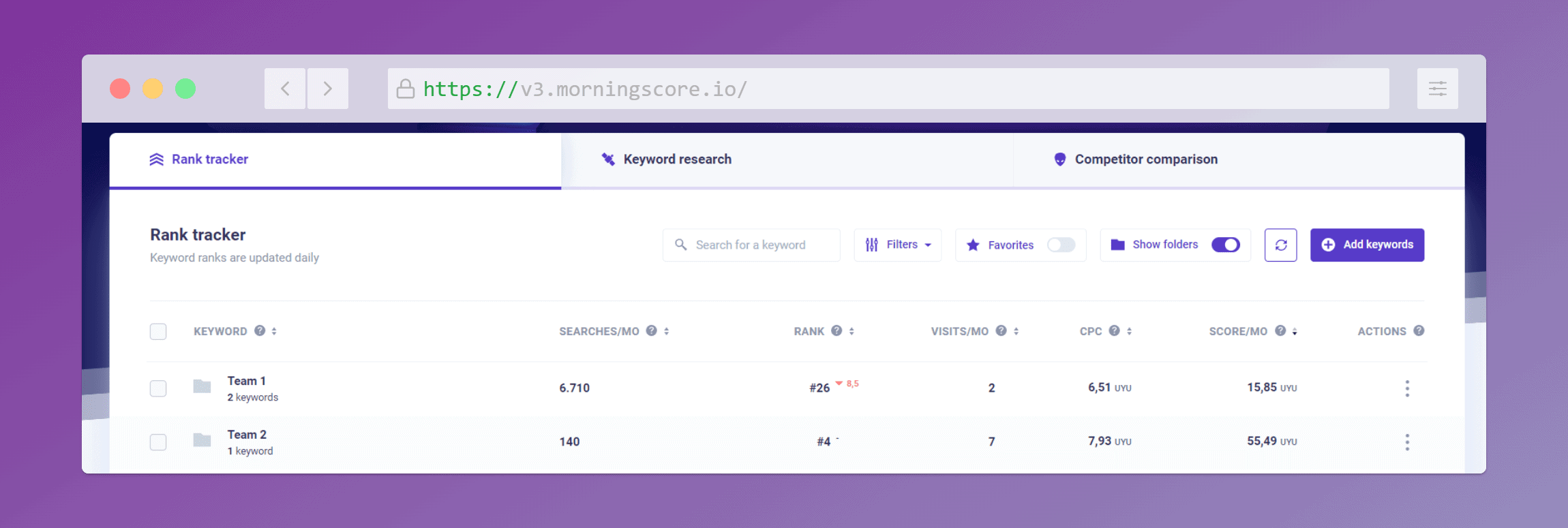Avoid chaos and loss of control in SEO 😵💫
An important aspect of SEO is keeping the overview of your keywords so you know where to direct your efforts.
The best way to achieve control is by grouping keywords into folders in a keyword management tool 📁
Henry Tejera (Henry’s LinkedIn), wrote an awesome guide on grouping keywords in our community (forum for customers).
Henry allowed me to share his guide here for everyone to learn from it – so enjoy his helpful tips:
1. Topics grouping of keywords
At first, I started grouping keywords thematically. Keywords related to the same theme were grouped with folders whose names referred to the main topic.
This type of grouping allows me to track by topic, which enables me to check the overall thematic balance of my site and to identify opportunities to develop a particular niche.
Click on images to see a bigger version
I have found this strategy useful especially for new sites, where the niche is not yet well defined. In the beginning, we create content for different thematic groups, and depending on how the keyword ranking evolves, we can choose to put more effort into a particular topic.
2. Grouping keywords by search intent
Another configuration I use is clustering by search intent.
Apart from topic clustering, I am also interested in tracking keywords based on their search intent.
Some sites’ strategies may involve answering several types of search intent: Shopping, informational, local, etc.
Finding a balance between them is often not an easy task. That is why it is important to track a group of keywords for which we develop a strategy to reinforce the development of content that covers search intent.
3. Grouping keywords by the growth potential
One of the most popular strategies for trying to optimize for opportunity keywords, better known as “low-hanging fruit”, is to look for pages that are close to ranking in the top 3 but are not there yet. With some small improvements, you may be able to get them in the top 3
I like to have a folder containing the low-hanging fruit keywords to keep track of them.
4. Grouping keywords by advertising campaigns
Sometimes you can create advertising campaigns in different media, as part of an SEM strategy.
Although there are tools that allow automatic measurement of this type of campaign, through objectives, measuring conversion, etc, I find it interesting to be able to isolate the keywords targeted by the campaign, to see if they have a general impact.
5. Grouping keywords by team
Another grouping that can be interesting to perform, is when keywords that were assigned to an internal or external team are grouped, for example: when an SEO agency is hired to generate content.
In that case, it can be a good idea to follow up on their work by monitoring how the ranking of the keywords on which the SEO agency (or someone inside in our company) was working evolves.
6. Group by branded keywords
Another grouping that I have found useful is to group by branded keywords.
A branded keyword is a search keyword that includes your brand name. Normally it’s relatively easy to rank for branded terms.
Although brand traffic may not be a direct result of our SEO efforts (it may be related to advertising campaigns), it is a good way to measure our strategies to increase brand awareness.
To sum up…
These are just some of the criteria used when grouping keywords into folders. Not to exaggerate, I’m not going to say that the possibilities are endless, but certainly, this seemingly simple grouping function allows us to do a more granular tracking of our ranking based on our objectives.
This type of grouping also helps us to generate missions, another of the functionalities that, in my opinion, positions Morningscore as an exceptional tool to go along with measuring the impact of our SEO work.






